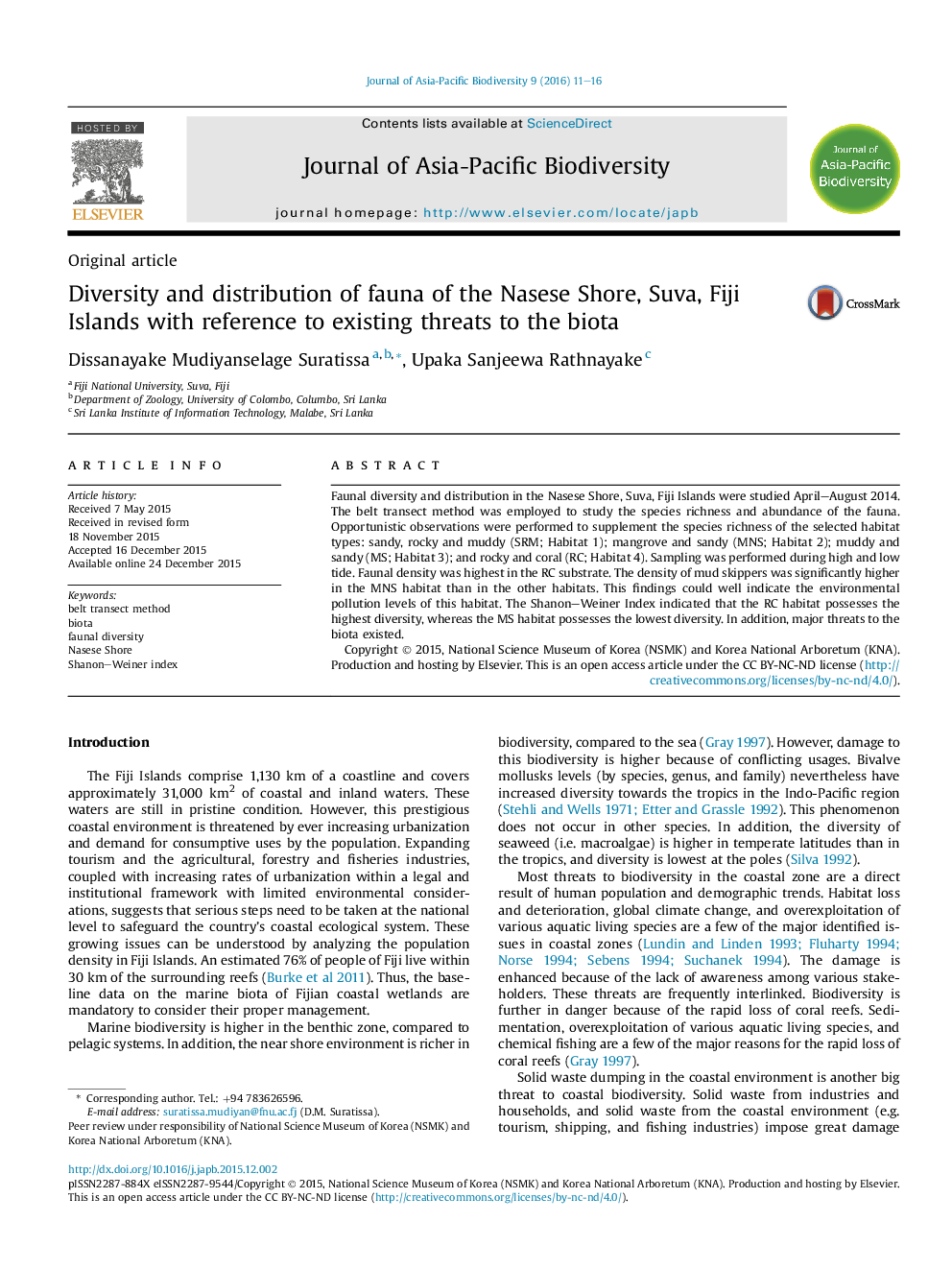| Article ID | Journal | Published Year | Pages | File Type |
|---|---|---|---|---|
| 4394967 | Journal of Asia-Pacific Biodiversity | 2016 | 6 Pages |
Faunal diversity and distribution in the Nasese Shore, Suva, Fiji Islands were studied April–August 2014. The belt transect method was employed to study the species richness and abundance of the fauna. Opportunistic observations were performed to supplement the species richness of the selected habitat types: sandy, rocky and muddy (SRM; Habitat 1); mangrove and sandy (MNS; Habitat 2); muddy and sandy (MS; Habitat 3); and rocky and coral (RC; Habitat 4). Sampling was performed during high and low tide. Faunal density was highest in the RC substrate. The density of mud skippers was significantly higher in the MNS habitat than in the other habitats. This findings could well indicate the environmental pollution levels of this habitat. The Shanon–Weiner Index indicated that the RC habitat possesses the highest diversity, whereas the MS habitat possesses the lowest diversity. In addition, major threats to the biota existed.
